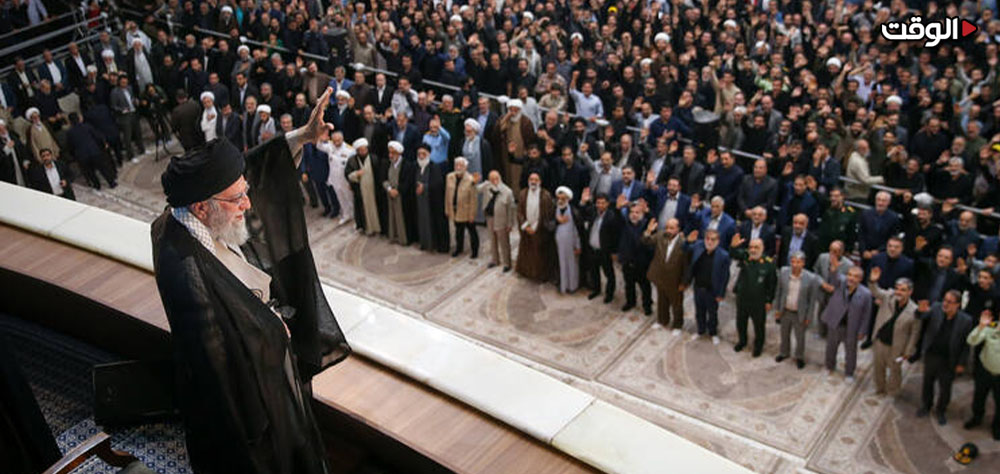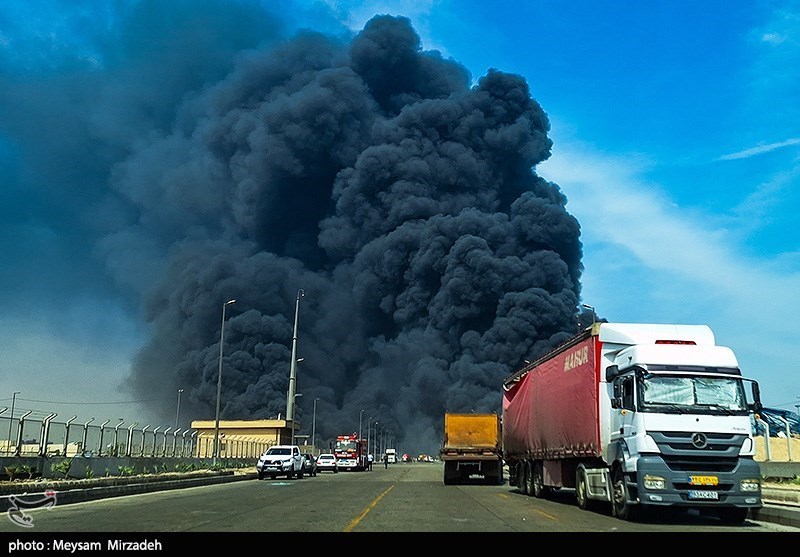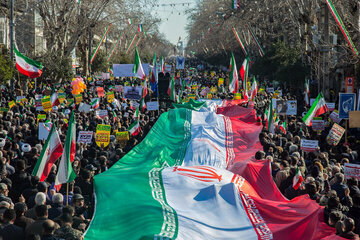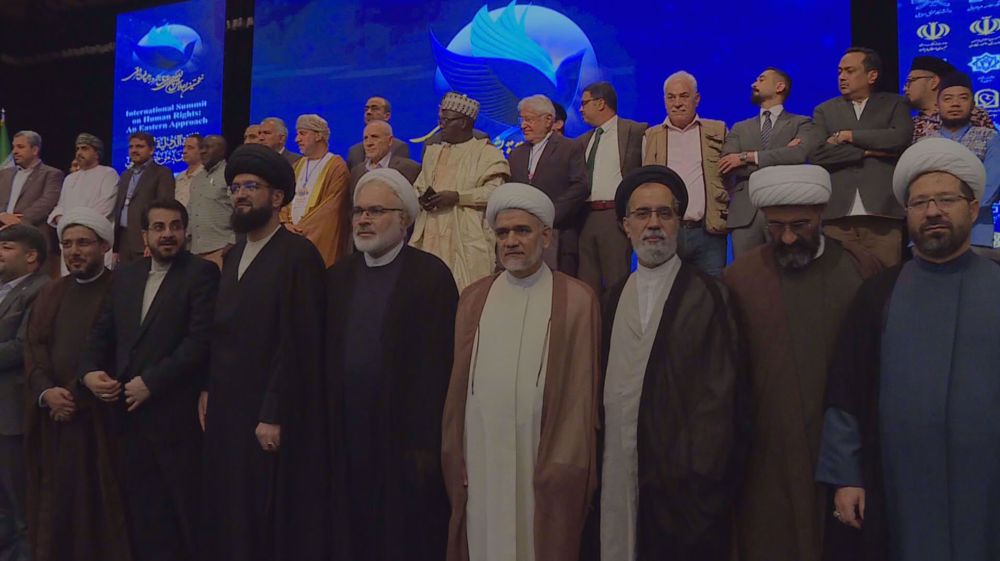Alwaght- The Israeli regime and Hamas reached an agreement to end Gaza war according to the US President Donald Trump's 20-point plan on Thursday. Alwaght has discussed the deal with senior analyst of West Asia affairs Javad Masoumi, asking him about the aspects of the deal and also the US role in it.
Alwaght: What factors have eventually pushed Israeli regime and Netanyahu to yield to the ceasefire agreement?
Masoumi: The agreement to a ceasefire should not be seen as a voluntary decision but a result of the Israeli decision-making structure coming to an end with choices regarding the war and accepting the field and strategic realities. An array of developments have pushed Tel Aviv at three field, political, and international levels to agree to shift from an offensive to a defensive position abd finally agree to the ceasefire.
On the military front, despite extensive and costly operations in Gaza, backed by substantial US intelligence and logistical support, the Israeli military failed to achieve its stated objectives. The resistance's military structure, despite sustaining intense attacks, not only remained intact but also demonstrated a preserved capacity for command, communication, and counter-offensives. This indicates that the capacity for deterrence is no longer the exclusive domain of the Israeli regime. This reality effectively cemented the concept of a strategic defeat of Tel Aviv at the operational level.
On the domestic political front, the ruling coalition within Israel experienced severe internal divisions. Netanyahu, caught between pressure from hardline factions on one side and widespread public protests on the other, lost control over the decision-making environment. Concurrently, a crisis of confidence intensified between the regime's security and political institutions, turning the "continuation of the war" from a policy option into an internal threat.
On the international level, the United States, as the primary external actor and a structural supporter of the Israeli regime, shifted its strategy following the erosion of Tel Aviv's operational efficacy. Its approach moved from unconditional military support to managing the consequences of failure. Washington's intervention in the agreement process was not primarily to end the crisis, but rather to control the strategic damage stemming from its prolongation. From this perspective, the US role in the recent agreement was less about supporting the Israeli regime and more an effort to prevent its defeat from spreading to a regional scale.
In summary, the confluence of these three levels created a situation of multi-dimensional pressure and a gradual erosion of Israel's strategic resolve, leaving it with no choice but to accept the agreement. This decision, in essence, reflects a gradual transition in the strategic initiative from the hands of Israeli military to the Axis of Resistance. More precisely, the recent agreement is not a product of the Israeli regime's calculated statecraft, but rather the compulsory outcome of its failures on the military, political, and deterrent fronts. It is an agreement that merely formalized a pre-existing military reality.
Alwaght: How aligned is this agreement with Trump's initial plan? Has the Palestinian resistance managed to impose its demands on the opposite side?
Masoumi: The recent deal ostensibly has some similarities with the initial plan proposed by the previous US administration, among these similarities are the execution phasing, the US and other countries' mediatory role, and focus on cessation of fire and swap of the prisoners. However, on a strategic and substantive level, this agreement has moved entirely away from Washington's initial logic and operates in direct opposition to its original objectives. The initial American plan was designed to gradually contain the resistance factions, establish an international mechanism for governing Gaza, and lay the groundwork for the disarmament of resistance groups. Yet, the dynamics on the battlefield and the resilience of the resistance forces fundamentally transformed this plan during its implementation. What is now recognized as an agreement between the parties is, in reality, a direct outcome of the Israeli regime's failure to achieve its stated goals and the successful imposition of the resistance's will on the ground. Within this agreement, a complete cessation of the regime's military operations and the commencement of a phased withdrawal of its forces have been accepted as prerequisites for implementing other terms. There is no binding reference to disarmament or the deployment of a foreign force in Gaza, and the matter of Gaza's administration has been deferred to later stages and separate negotiations. So, the Palestinian resistance has managed to entrench within the agreement the core principles of preserving its deterrence powers and its decisive role in the future of Gaza. Furthermore, the equation for prisoner swap has been redefined in favor of the resistance groups. The release of a large number of Palestinian prisoners in exchange for a limited number of prisoners held by the occupying regime has not only shifted the psychological and political balance in favor of the resistance but has also demonstrated that the resistance forces hold the initiative in this case as well. Additionally, by focusing the first phase of implementation on the delivery of humanitarian and relief aid, the international narrative has been shifted from Israel's military victory to the necessity of stopping a humanitarian crisis. This, in effect, has stripped the Israeli regime's military action of its legitimacy. Therefore, it can be argued that while the recent agreement is American in its framework, its substance is a product of the resistance's will. Washington, which initially sought to impose its own plan, ultimately found itself merely managing the consequences of its ally's defeat in Gaza. What appears on the surface to be a political agreement between the parties is, in truth, the legal formalization of a reality imposed by the resistance on the ground. It is a reality in which Israeli deterrence has crumbled, and strategic initiative has been transferred to the Axis of Resistance.
Alwaght: What does the agreement say about the future of resistance groups in Gaza, as well as the future of their arms? What is your assessment of Hamas's view?
Masoumi: The recent agreement deliberately avoids addressing long-term sovereignty and security issues, including the governance of Gaza and the military status of the resistance. This is not an oversight but a direct result of the shift in the balance of power on the battlefield and the inability of the Israeli regime to impose its strategic demands. From this perspective, the omission of clauses related to disarmament or the deployment of foreign forces in Gaza signifies the recognition of the resistance as the dominant military and political actor in the territory.
Within the framework of the agreement’s first phase, there is no mention of any commitment by the Resistance to restrict its military capabilities. On the contrary, the structure of the text is designed in such a way that a cessation of hostilities and the phased withdrawal of the regime’s forces are prerequisites for implementing other provisions, including the prisoner exchange and the entry of humanitarian aid. This sequence of commitments effectively means that the resistance’s deterrent capability has been accepted as the decisive factor in managing the crisis and ensuring the agreement’s implementation. This represents a fundamental shift in the logic of security interactions concerning Gaza, as, for the first time, the military tools of the resistance are being treated not as a threat but as an effective reality in the regional stability equation. In terms of governance, the current agreement lacks any binding clauses regarding the transfer of power or the establishment of an alternative administrative mechanism for Gaza. As a result, the governance structure in Gaza will effectively remain within the orbit of the resistance. Although subsequent stages may involve arrangements with local or regional entities for public service management aimed at alleviating humanitarian and international pressures, these measures will not alter the fundamental sovereign role of the resistance and will likely remain limited to operational coordination. From a strategic standpoint, Hamas views this agreement as a means of consolidation and reconstruction. Its leaders regard the agreement not as an end to the conflict but as a temporary phase for realigning military and political capacities. This understanding is rooted in the core principles of the Axis of Resistance, which sees sustained deterrent power as the guarantor of political gains. By agreeing to a ceasefire, Hamas has entered a phase of strategic management, allowing it to rebuild infrastructure, restore combat readiness, and redefine its political position in the post-war environment, all while preserving and enhancing its deterrent capacity. In summary, regarding the future of the resistance and Hamas’s military capabilities, the recent agreement does not pose a threat to the continuity of its military and political power. Instead, it signals its implicit acceptance by the opposing side. From this point forward, any effort to alter the governance equation in Gaza or restrict the resistance’s military capacity will only be possible through a change in the balance of power on the ground, a balance that, under current conditions, clearly favors the Axis of Resistance.
Alwaght: One of the key debates is about the guarantee and the degree of reliability of Israeli regime in acting on its obligations after release of the prisoners. What is you assessment of the credibility of the guarantees?
Masoumi: Assessment of the degree of credibility of the guarantees regarding the recent agreement requires a distinction between two levels of obligations: First, the political and legal guarantees ostensibly framed by the mediation of the United States, Qatar, and Egypt; and second, the real and effective guarantees rooted in the balance of power and on-the-ground deterrence. The decades-long experience of dealing with the Israeli regime demonstrates that guarantees of the first type are unreliable on their own, due to the lack of binding enforcement mechanisms and the regime's extensive record of violating agreements. In reality, the United States does not play the role of a neutral mediator in this agreement; it is itself a key actor and the primary supporter of the Israeli regime. Washington's objective is less about guaranteeing the agreement's implementation and more about managing the consequences of the regime's defeat and containing the scope of the crisis. Therefore, the political guarantees offered by Washington cannot be considered a basis for sustainable enforcement.
From a strategic perspective, the only real deterrent against violations by the Israeli regime is the balance of power and the responsive capacity of the Axis of Resistance. Put clearly, if the regime reneges on its other commitments after the release of its prisoners or resumes military action, it is the resistance, with its operational power and deterrent pressure, that can impose a cost for such a violation and transgression. Consequently, it can be argued that the resistance's operational capability is, in itself, the primary mechanism guaranteeing the agreement's implementation.
Alongside this on-the-ground reality, internal political instability in Tel Aviv is another factor that undermines confidence in this agreement. Profound divisions within the ruling coalition, public opinion pressure, and the diminished legitimacy of Netanyahu have rendered decision-making within the Israeli regime incoherent and lacking in continuity. Under such conditions, even if international bodies or mediators desire the full implementation of the agreement, the Israeli side lacks the capacity to uphold its commitments. Based on this, it can be concluded that the agreement's real credibility lies not in political signatures on the paper, but in the preservation of the balance of power and the continuity of the resistance's deterrence. The Israeli regime will remain committed only so long as it is convinced that violating the agreement is more costly than adhering to it. However, should it perceive weakness or enjoy absolute support from the United States, the likelihood of violation, criminal behavior, and a return to aggression increases significantly.In summary, the enforcement mechanism for this agreement is not external or legal, but internal and deterrent. The ceasefire and the implementation of commitments will only persist as long as the Axis of Resistance maintains its capability and readiness to respond, thereby keeping the cost of violation perpetually high for the regime.
Alwaght: Should we regard the ceasefire in Gaza as a de-escalation of tensions in the region? Or will the government of Netanyahu continue to spread chaos and crisis in the region?
Masoumi: The recent agreement on the Gaza case, while leading to a temporary halt in military operations, should in no way be interpreted as a sign of a change in the behavioral nature or strategic paradigm of the Israeli regime. The cessation of hostilities is, in fact, a result of the regime's inability to continue a costly war and the military stalemate it faced, not an outcome of transformed security calculations or a genuine willingness for peace. From this perspective, the current agreement represents merely a tactical pause within Tel Aviv's crisis-centric strategy, not a transition towards behavior based on stability and coexistence. In the short term, the Israeli regime is expected to avoid escalating direct military conflicts to repair its damaged domestic image and manage international pressures. However, in the medium term, the regime's behavioral logic, predicated on "the continuous generation of crisis to maintain deterrence", will be reactivated. Indeed, a regime that has defined its political survival and cohesion through the perpetuation of threat-manufacturing cannot sustainably exist in a state of calm. From a structural perspective, three key variables will shape the regime's future behavior: 1. An internal crisis of legitimacy and a fragile ruling coalition: Netanyahu and his hardline coalition, to prevent political collapse, will be compelled to stage aggressive actions and reconstruct an image of power. 2. The need to rebuild lost deterrence: The loss in Gaza led to a serious erosion of the regime's military credibility; therefore, limited and targeted attacks in secondary theaters like Lebanon and Syria are likely, aimed at restoring deterrence. 3. Assurances of continued American support: The perception of unwavering support from Washington will encourage continued adventurism and destabilizing behavior. Under these conditions, it is probable that in the post-agreement phase, the Israeli regime will pursue a pattern of controlled tensions and limited, deniable actions instead of full-scale conflict. These actions could include intelligence and cyber operations, pinpoint attacks on the infrastructure of the Axis of Resistance, and security provocations in the West Bank and along the northern border. The objective of this approach will be to rebuild lost deterrence without triggering an all-out war. Strategically, this agreement will lead to a temporary reduction in the intensity of hostilities, but not an end to the Israeli regime's logic of crisis-generation. As long as the power structure in Tel Aviv is centered around hardline coalitions and a policy of survival through threat-inflation, the regime's regional behavior will persist within the framework of "controlled instability." Consequently, the de-escalation should be assessed as merely temporary and tactical, not a structural shift in the regime's conduct. In conclusion, while the recent agreement has temporarily calmed the military theater, the security nature of the Israeli regime remains fundamentally oriented towards crisis and threat production. Therefore, the sustainability of calm in the region is only conceivable if the Axis of Resistance, by maintaining readiness and active deterrence, keeps the cost of any return to aggressive behavior by the regime demonstrably and decisively high.
Netanyahu's hardline allies have consistently threatened to sink the coalition government should the war end without the obliteration of Hamas. The fate of his cabinet following this agreement is therefore intrinsically linked to a profound political crisis. This recent agreement should be seen not only as a turning point on the battlefield but also as the beginning of a new phase of crisis within the power structure of the Israeli regime. The agreement was accepted at a time when the governing coalition in Tel Aviv had, for months, built its legitimacy on the continuation of the war and the achievement of its declared goal of the "complete destruction of the resistance." Agreeing to a ceasefire and a prisoner exchange without achieving that objective amounts to a tacit admission of strategic failure and a retreat from the government's stated positions, a development that will have direct consequences for the political stability of the cabinet. Currently, the power structure of the Israeli regime is facing symmetrical pressures from two fronts: internally, from public distrust, a crisis of political legitimacy, and criticism from military institutions regarding the war's management; and externally, from the requirements of implementing the agreement and the oversight of mediators. These pressures, combined together, have severely constrained the government's room to maneuver. The ruling coalition lacks both the capacity to resume full-scale war and the political capital to fully implement its commitments, resulting in a state of strategic gridlock and gradual erosion. From the perspective of political survival, Netanyahu is forced to navigate the conflict between internal factions and buy time through tactical maneuvers to maintain his grip on power. However, this approach is inherently temporary and unstable, as none of the major power centers within the structure retain the necessary trust in the current political leadership.
The persistent rift between the regime's security institutions, political decision-makers, and its social base increases the likelihood of a breakdown in high-level decision-making in the coming months. From a strategic perspective, the recent agreement can be seen as the starting point for a gradual erosion of the existing political order in Tel Aviv. The current government remains in place nominally, but it has lost its political capital and has become entirely dependent on external support, particularly from the United States. While this dependency may sustain the cabinet in the short term, it will ultimately lead to a loss of decision-making autonomy and a deepening of its internal crisis in the long run. Consequently, Netanyahu's cabinet finds itself in a state of suspended survival following the agreement, outwardly intact, yet internally eroded in terms of legitimacy and structurally fractured. The full implementation of the agreement, at every stage, will intensify the political crisis of legitimacy, while any delay or obstruction in its execution will result in increased external pressure and internal instability. Overall, the recent agreement marks not the end of the war in Gaza, but the beginning of a new phase of leadership crisis and the attrition of political power within the Israeli regime. In the medium term, the continuation of this trend could pave the way for a restructuring of power in Tel Aviv and the emergence of a new political order, one that will be more constrained than ever by the balance of power vis-à-vis the Axis of Resistance.
The recent agreement should be viewed not merely as the endpoint of military conflict, but as the beginning of a new chapter in the regional balance of power. Despite its outward appearance, this agreement is not the product of American pressure nor concessions made by the Axis of Resistance; rather, it is the direct outcome of a shift in the facts on the ground and the imposition of the resistance's will upon the Israeli regime. The Israeli regime entered a war aimed at destroying the Palestinian resistance and restoring its lost deterrence. Yet, the ultimate result has been the inverse: the military structure of the resistance endured, its resolve remained unbroken, and the regime was compelled to accept a ceasefire. This signifies the defeat of a strategy, not merely the halt of a military campaign. From a strategic standpoint, this agreement represents a failure of the American plan to contain Hamas and control Gaza from the outside. Washington, as the primary backer of the occupying regime, which initially sought to redefine Gaza's political order, was ultimately forced to assume the role of a mediator managing the failure. Consequently, the power to shape outcomes has shifted from Western capitals to the actual arena of the resistance. On the regional level, the agreement has altered the balance of deterrence in favor of the Axis of Resistance. Within this new equation, the military capability of the Palestinian resistance is now recognized not merely as a defensive tool, but as the decisive factor for stability and security in Gaza and the wider region. The Israeli regime can no longer impose its own rules and must come to terms with the reality of the Resistance's presence and authority. Conversely, the government in Tel Aviv is confronting a multi-layered crisis: an internal crisis of legitimacy, military ineffectiveness, and growing dependency on American support. This situation indicates that the current cabinet is in a phase of gradual attrition and suspended survival. The regime will be incapable of initiating a full-scale war in the near future; however, it may resort to limited, targeted, and deniable actions in an attempt to restore its diminished stature. Within this framework, the sustainability of the agreement and relative calm in the region is guaranteed only so long as the resistance's deterrent capability remains active and prepared. The real guarantee of this agreement lies not in signatures or mediators, but in the cost that the Resistance can impose for any violation or renewed aggression by the regime. From the perspective of the Resistance front, this agreement must be seen as the start of a phase for rebuilding strength and consolidating its gains on the ground. The current opportunity must be leveraged to repair infrastructure, reconstitute military capabilities, and strengthen political and popular cohesion in Gaza, thereby cementing the new balance of power as a lasting reality. Finally, it can be stated that: 1. The recent agreement does not mark the end of the war, but rather the beginning of a new era of strategic superiority for the Axis of Resistance. 2. The regional balance of power has shifted, with the Israeli regime falling from an offensive to a defensive posture.3. Regional security and stability are no longer defined by the will of the Israeli regime, but by the weight and resolve of the Axis of Resistance.



























